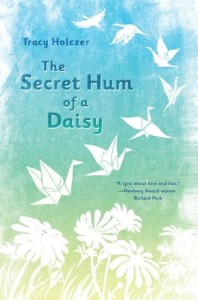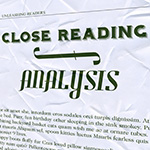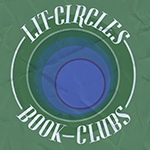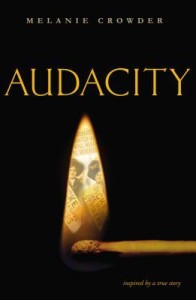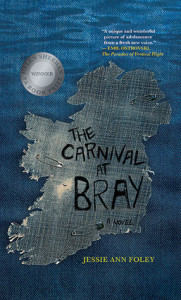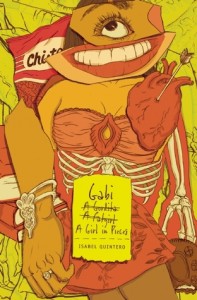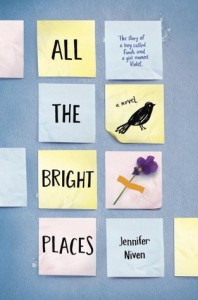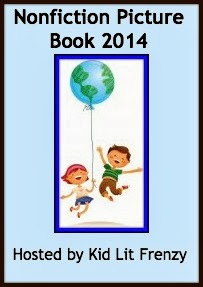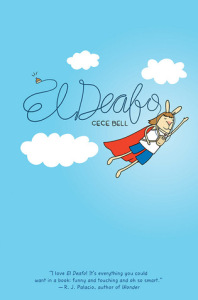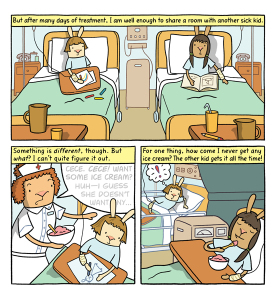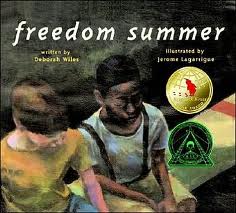The Secret Hum of a Daisy
Author: Tracy Holczer
Published: July 24, 2014 by Annick Press
Summary: Twelve-year-old Grace and her mother have always been their own family, traveling from place to place like gypsies. But Grace wants to finally have a home all their own. Just when she thinks she’s found it her mother says it’s time to move again. Grace summons the courage to tell her mother how she really feels and will always regret that her last words to her were angry ones.
After her mother’s sudden death, Grace is forced to live with a grandmother she’s never met. She can’t imagine her mother would want her to stay with this stranger. Then Grace finds clues in a mysterious treasure hunt, just like the ones her mother used to send her on. Maybe itis her mother, showing her the way to her true home.
Lyrical, poignant and fresh, The Secret Hum of a Daisy is a beautifully told middle grade tale with a great deal of heart.
Ricki’s Review: The Secret Hum of a Daisy truly pulled my heartstrings. Readers of this blog know that I am a slightly critical reader of middle grade texts, and I often prefer high school texts, but my oh my, this one is beautiful. Having lost loved ones and friends, I know that grief hits you at random times. Holczer captured this reality beautifully. This book feels melancholy at the same time as it feels hopeful and lyrical. Young people will learn strength and resilience in Grace. Holczer’s thoughtful pacing makes this poignant coming of age story quite beautiful.
Kellee’s Review: This is one of those books that grabs you and sucks you in. I mostly love our main character. She has had to grow up too quickly thus making her a bit rough around the edges, but the way that friendship, family, history, poetry, and stories smooth her out is just so well done. Although at times I felt Grace came off older than she is, I realized, after talking to Carrie G., that it is because of the hardships she has endured. And the cast of characters, family and friends, who play a role in Grace’s transformation all are so well crafted. The Secret Hum of Daisy is a beautiful book because of Holczer’s word choice, Grace’s story, and the look at grief, family, and friendship.
Teacher’s Tools for Navigation: The Robert Frost references in this book easily lend themselves to instructional supplements for teachers. The sadness of this novel is important to discuss with students. They might consider poetry or journaling as an outlet for their emotions. Additionally, teachers my show students the stages of grief to help them better understand Grace’s emotions. Grace says that she gathers “every bit” she can of her Mama. Teachers might consider asking students to gather bits of people they love and sharing these with the class. Curriculum Guide from Penguin.
Check out our Guest Post from Tracy Holczer here!
Discussion Questions: Does Grace’s mom make mistakes in her parenting? What might she have done differently?; Do you agree with Grace’s decision to live in the shed? Do you consider this to be immature or strong of her? Why?
We Flagged: “Mama pulled me into her lap and her yellow chair creaked under our weight. ‘You have to trust me, Grace. We don’t need anyone else.'” (p. 8)
“Trying to ignore the blasts of rain against the tin roof, I dug a flashlight out of one of the boxes and laid my sleeping bag and pillow on our flower-garden sofa. I took my latest notebook out of my duffel and climbed into the sleeping bag.
I hadn’t written anything in the six days since Mama died, and the words were scratching at me in the way they always did. I hoped to find the end of that string inside of myself–the string that tended to work into knots–and pull it straight. That was how the words felt sometimes as I wrote them down. Like I was taking something scrambled and unscrambling it.” (p. 24)
We also loved page 57, 97, and 134.
Read This If You Loved: In This Moment by Wendy Glenn, A Tree Grows in Brooklyn by Betty Smith, Bridge to Terabithia by Katherine Paterson, A Monster Calls by Patrick Ness, The Impossible Knife of Memory by Laurie Halse Anderson, Love Letters to the Dead by Ava Dellaira, The Carnival at Bray by Jessie Ann Foley, All the Bright Places by Jennifer Niven, Fish in a Tree by Lynda Mullaly Hunt, Rain Reign by Ann M. Martin, Torn Away by Jennifer Brown
Recommended For:
**Thank you to Tracy Holczer for providing copies for review**
